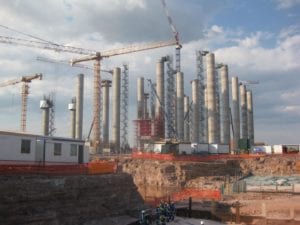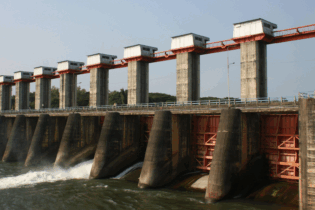By Brian Dames, CEO of Eskom
Eskom has learnt some painful lessons over the past few years during our first massive expansion programme in 20 years and the largest ever undertaken in South Africa. It would be hard to overstate the size of the programme. Our three huge new power stations — Medupi, Kusile and Ingula — will add 12 000MW to the grid. Medupi alone will add 12% to Eskom’s capacity and will provide almost enough electricity to power Johannesburg and Pretoria at peak. The lessons we’ve learnt along the way should provide an instruction manual for the private and public sector for the next few decades. The first lesson we learnt is the need to make timeous investment decisions. South Africa left it far too late when it came to Eskom. If Medupi and Kusile had been planned, built and commissioned long ago, we would not have the very tight power system we have now and will have for the next few years. South Africa will need further new base-load capacity beyond 2019, especially once we start decommissioning older power stations as they reach the end of their lifespans. The country cannot afford to run the risk of again leaving it too late to commit to new infrastructure projects. Building Medupi and Kusile too late meant we also had little opportunity to complete all the upfront planning. We went ahead based on virtual designs, and using the best footprint available in Eskom at the time — the designs for Majuba power station, which had been designed in the 1980s and completed in 2001. As a result, we hit unexpected geo-technical challenges. We were faced with a brand-new turbine-base design from our turbine supplier and boiler seismic design challenges. This was the cause of the first delay to the project. Back in 2005, when the Eskom board approved what was then called Project Alpha, the first unit was due to come online in September 2011. Thanks to the geo-technical challenges and problems with the contractors, the date was pushed out to December 2012. Then, in 2011, structural steel problems on the boiler meant we had to revise the date again to the end of 2013. This has now become the second half of 2014, thanks to underperformance by key contractors. And the cost has risen. Back in 2007, everyone was building power stations, so we had boiler and turbine companies saying they were too busy and there were no slots for us. We could not secure fixed-price contracts — no one undertook them. We are often asked why we did not do Medupi as a “turnkey” contract. The answer is that, globally, no one would agree to do Medupi on that basis. The timing of the start had a big impact on the project and its risk profile. Another lesson is not to proceed with such a large project without a clear idea of how it will be funded.That had a particular impact on Kusile, which was delayed more than a year because of uncertainty about where the funding would come from.
What we learnt is that the entire basket of financing elements have to be in place to give confidence to all participants — the shareholder, debt investors and suppliers — that the borrower will be able to service its obligations. Regretfully, equally important imperatives that were pursued at a time of excess capacity — such as reducing the real price of electricity by over 25% between 1994 and 2000 — did little to provide a war chest for future investment. This meant Eskom was faced with the need to access an inordinately high mix of debt-to-equity, which quickly placed great strain on our credit rating. At the low point of our funding dilemma, Eskom had a R300 billion funding gap which, after a rigorous evaluation of 45 different funding options, was ultimately funded mainly with a government loan, and bond financing underpinned partially by government guarantees. We have successfully secured 83% of this funding and recently our second dollar-denominated bond of US$1-billion, which was four times over-subscribed. There’s also the matter of skills. South Africa did not build for almost two decades. In that time, South African industry, not only the electricity industry, lost significant skills such as supervision, project management and welding skills. We also lost some key supplier industries that went out of business because there was no market for their products. As a country, we must not do that again. We cannot afford this stop-start approach to infrastructure investment. To some extent, our infrastructure programme — which is R60 billion a year of investment in South Africa — has tried to remedy this problem. Medupi alone, for example, is consuming the equivalent of 43% of a year’s engineering graduates in relevant fields, and 48% of the artisans. We are rapidly growing South Africa’s pool of engineers, artisans and project management experts. We have established an Eskom welding school and a power plant engineering institute that will collaborate with leading South African universities. You also have to collaborate with contractors to ensure sound labour relations. Medupi and Kusile were started with project labour agreements, which were signed by the employers and labour, but to which Eskom was not a party. The constant labour unrest on the site has shown us that this needed to be reviewed. We estimate we have lost cumulatively about nine months due to labour unrest since the inception of the Medupi project. We have now negotiated a partnering agreement at Medupi and Kusile, which was signed by Eskom and all the contractors and trade unions on site in June. Finally, it is important to look ahead; to what will happen to the workers and the local area once the construction phase ends. As a country, we need to put in place measures to build on the skills and industries that have been developed, so that these are not lost to South Africa once we commission the project.







